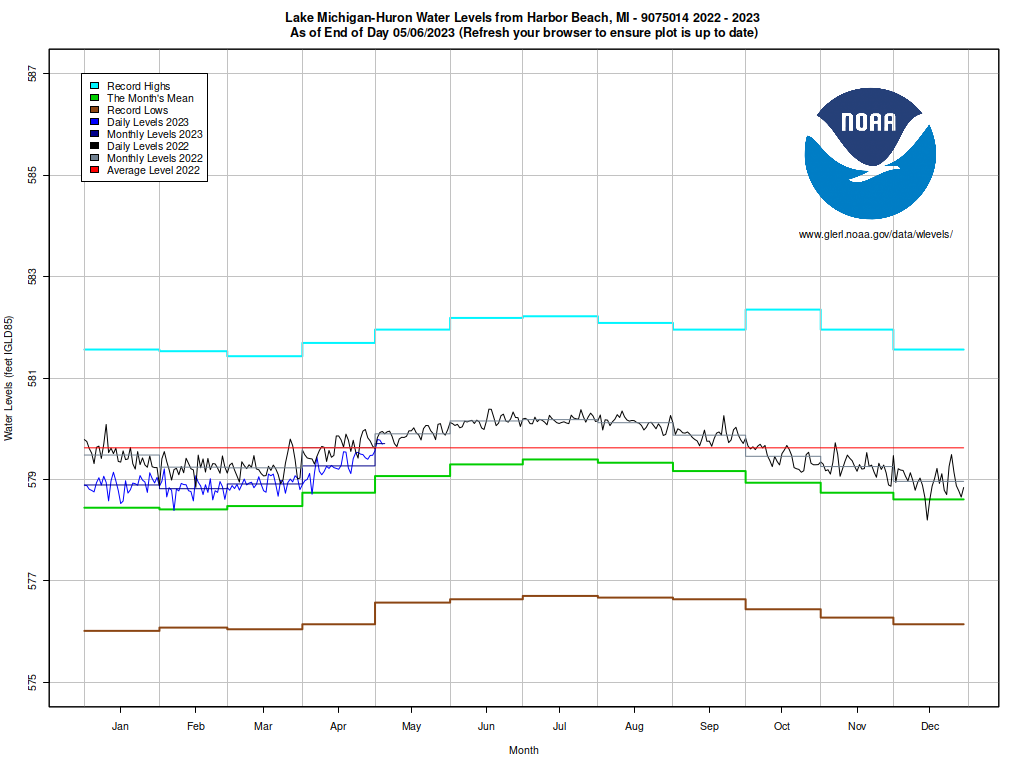WEST MICHIGAN — Water levels tend to fluctuate during the year, but seasonally speaking, lake levels typically rise during the spring and early summer. Highest water usually occurs in July.

According to National Weather Service Grand Rapids, the water level of Lake Michigan and Huron, (hydrologically, a single lake) has fallen a net 4 inches from one year ago. However, this level still stands 6 inches above the May average, which has been tracked since 1918.

According to the U.S. Army Corps., the lake levels will continue to rise after snow in the UP and rain showers through West Michigan.
"Forecasted water levels for May 5th for Lakes Superior, Michigan-Huron, and Ontario range from 6 to 11 inches above levels of a month ago, while Lake St. Clair is 3 inches below levels of a month ago and Lake Erie is near its level from last month. Also, projected water levels for 5 May indicate water levels are above last year’s on Lakes Superior and Ontario and below last year on Lakes Michigan-Huron and St. Clair. Lake Erie is near its level from last year. Additionally, forecasted water levels for 5 May across all the lakes are above their May long-term average levels."
Projected net change in levels by June expect to rise about 3 inches.



